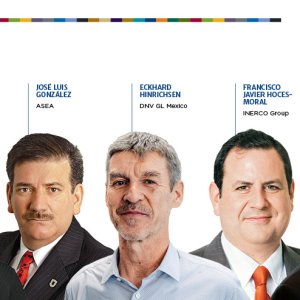
Mexican Manufacturing a Heavy Weight in International Market
While Mexico has made significant leaps in the manufacture of light vehicles, it has not fallen behind on heavy vehicles, even if the latter spends less time in the spotlight. “Often, Mexico’s strong light-vehicle market does not allow us to see the significant growth of the heavy-vehicle manufacturing sector,” said Óscar Albin, Executive President of INA, at Mexico Automotive Summit, held on Wednesday at the Hotel Sheraton Maria Isabel in Mexico City.
Mexico’s heavy-vehicle industry has a lot to be proud of, added Miguel Elizalde, Executive President of ANPACT. “Mexico is the largest truck exporter in the world,” he said. “Twenty years ago, Mexico exported 1,000 heavy vehicles per year; now we export 161,000.” The country owes this growth, to its large number of FTAs and excellent manufacturing practices, explained Elizalde. “Mexican plants stand out thanks to their efficiency and certifications. We also keep up with the latest international standards.” The country’s efforts are expected to continue bearing fruit. “Mexico is evolving from a high-quality manufacturing country to a country of transformation,” agreed Juan José Zaragoza, Mexico Business and Country Leader of DuPont Transportation & Industrial.
Mexico is also in a strategic position to export to North and Latin America. However, “location is not enough. It must be supported by policies that support the manufacturing sector and a strong labor force. Education is essential for the manufacturing sector,” said Flavio Rivera, Director General of Daimler Trucks. While most exports are headed to the US and Canada, the country is now beginning to take advantage of its numerous FTAs and export to other countries in Latin America, such as Colombia.
Although Mexico has FTAs with 45 countries, most exports still head to a single destination. “Mexico has an enviable number of FTAs, but our exports depend mainly on only one country, the US,” said Juan Pizano, Global Trade Advisory Services Partner at Deloitte Consulting Group, while acknowledging that Mexico’s strong links with the US and also Canada were positive for the country’s manufacturing sector. “The close integration Mexico has with its commercial partners has allowed for the development of a very complex supply chain,” he said.
However, it also brought about a significant challenge as trade tensions between Mexico and its northern neighbor may cause problems for the local automotive industry. Pizano explained that he is not too concerned about Mexico’s capabilities to adhere to the USMCA’s rules of origin thanks to the strong linkage between the supply chains of Mexico, the US and Canada. However, he said that the sector must consider a rule that states that 70 percent of steel has to be bought locally. “We do not know if those amounts of steel will be available in Mexico,” said Pizano. Moreover, while many anxiously wait for the ratification of USMCA, compliance with the 70 percent steel rule starts a year previous to the ratification of the treaty.
While Mexico’s heavy-vehicle industry has greatly grown its exports, there are significant challenges in the local market. “It is necessary to strengthen Mexico’s heavy-vehicle market,” said Elizalde. While exports have skyrocketed, this is not the case for local sales. “ANPACT members sell about 40,000 trucks per year. This number has remained the same since 2000,” he added. The reason is that local regulations for heavy vehicles are not as strict as those in foreign markets. As a result, Mexico imports old, used vehicles from the US. “Mexican manufacturers follow strict regulations to allow for our products to be exported but local regulations do not enforce these strict requirements, so many users import substandard vehicles. For every 4,000 vehicles ANPACT members sell per year, 10,000 more vehicles are imported from the US,” said Elizalde. For that reason, the industry is calling for stronger internal regulations that promote the replacement of older, imported vehicles with newer fleets.














